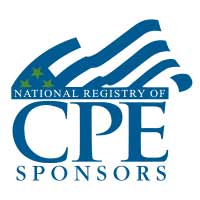An Interactive 5-Day Training Course
Safety Technology & Risk Management
Adopting a Systematic Approach to Risk Identification,
Assessment and Management
Course Overview
As technological systems become more complex, it becomes increasingly difficult to identify safety hazards and to control their impact. Plant Managers and Engineers are becoming more aware that safety and risk touch on every aspect of the day to day running of their Plants and engineering and process systems if they are to comply with ever changing and demanding International, and National environmental and economic values and standards.
Unsafe systems can result in monies being lost due to accidents, disruption to production, criminal and civil prosecutions, loss of market share, and the degradation of company assets and the environment.
The highlights of this GLOMACS training course are as follows:
- Introduce to the delegate the practical ways of safety engineering and risk assessment systems
- Methods and techniques in eliminating, mitigating and controlling major hazard situations and conditions
- Using well established principles defined by International and professional bodies such as IChemE (Institute of Chemical Engineers), developed and formulated over many years and further established from learning from major accidents
- Provide the delegate with a working knowledge of the proactive and reactive processes by which quantifiable assessments can be used to assess and control risks
Training Outline
DAY 1: Hazard Identification
- Introduction and Course Overview
- Why do we need safety engineering?
- Examples of Major Disasters
- The Safety System Process
- Hazard Identification
- Hazard Control
- Criteria for Risk Tolerability
- Hazard Identification Techniques
- Design Out Hazards
- Safety Standards Codes, National and International
- Safety Analysis in Engineering
- Safety Analysis in Chemical Process
- Safety Analysis in Manufacturing
DAY 2: Risk Assessment Techniques
- Safety Management
- Safety in System Life Cycle
- Hazard Identification Check-list
- Process, Workplace, Work Equipment Risk Assessment
- Task-based Risk Assessment
- Introduction to HAZOP
DAY 3: Machinery and Work Equipment Safety
- Machinery Hazard Identification
- Causes and Methods for Machinery Accident Prevention
- HAZOP Examples
- Failure Modes, Human Factors and Software Safety
- Conducting a Failure Mode and Effective Analysis
- Performance and Human Error
- Human Factors and Safety Analysis
DAY 4: Reliability Technology
- Types and Causes of Failures
- Methods of Preventing Failure
- Types of Maintenance and Inspection Regimes
- Reliability of Components and Systems
- Design and Reliability of Control Systems
- Design and Reliability of Protective Systems
- The Concept of ‘HIPS’
- Safety Integrity Levels ‘SIL’ Selection
DAY 5: Consequences Analysis
- Mechanics of Fire, Explosion and Toxic Releases
- Dispersion Modelling Software
- Types of Fire: Flash, Jet, Cascading Fires and BLEVE
- Types of Explosion
- Quantification of Risk
- Event Tree Analysis ‘ETA’
- Course Summary
- Course Review
Certificates
- On successful completion of this training course, GLOMACS Certificate will be awarded to the delegates
- Continuing Professional Education credits (CPE) : In accordance with the standards of the National Registry of CPE Sponsor, one CPE credit is granted per 50 minutes of attendance
Accreditation


GLOMACS is registered with NASBA as a sponsor of Continuing Professional Education (CPE) on the National Registry of CPE Sponsors. NASBA have final authority on the acceptance of individual courses for CPE credit. Complaints regarding registered sponsors may be submitted to the National Registry of CPE Sponsors through its website: www.learningmarket.org.
All Training Seminars delivered by GLOMACS by default are eligible for CPE Credit.


About Saudi Glomacs
At Saudi GLOMACS, we specialize in delivering world-class training courses in Saudi Arabia and across various international locations. Our training courses are tailored to meet the unique demands of Saudi Vision 2030 and the Human Capability Development Program, focusing on empowering Saudi citizens and enhancing workforce skills. We offer diverse courses spanning leadership, management, engineering, and technical disciplines to cultivate expertise and drive professional growth. Our flexible learning options—whether in-person, online, or in-house—ensure accessibility and convenience for individuals and organizations alike.
With over 30+ years of experience through the GLOMACS global network, we are committed to delivering innovative, results-driven training solutions. Our expert instructors combine industry knowledge with dynamic teaching methods, fostering practical skill development and long-term career success. By choosing Saudi GLOMACS, you're investing in personal excellence and contributing to the Kingdom’s sustainable economic growth and vision-driven transformation.
What do you need to learn next?
Check our list of courses or let us customize a course for you.
View courses


